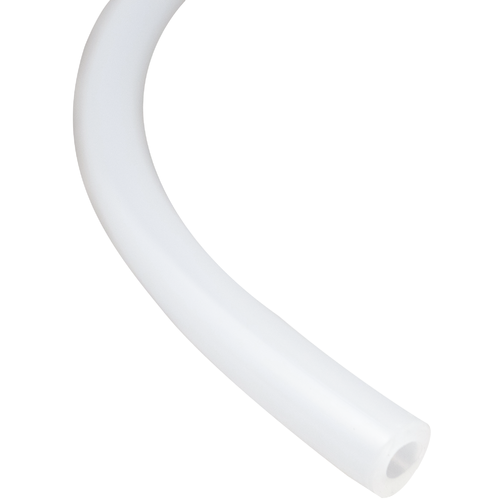My experience with 4mm ID tubing is that for ~2.5 vol beers I get good pours with the line practically just reaching from the keg to the tap with a small amount of wiggle-room (slightly over 1m or 4ft). The story changes completely for 3.5 vol beers, where I need in the order of 3.5m or 11ft of line. I was expecting to need seriously less 4mm line for 3.5 vols, but reality didn't agree with my expectations. (data point: I used 6ft / 15ft of 3/16" ID in my previous keezer, so 4mm vs. 3/16" doesn't seem to scale linearly as a function of keg pressure)
That said, lines with Duotights are so easy to swap out, that I'd just spend half an hour of active time to figure out the best line length; cool-downs between experiments may give more realistic results. Remember, the calculator should be working for you, not vice versa. If you get good pours with different line lengths than those suggested by a calculator, the calculator is wrong, not reality.
Well, and I actually measure line in "keezers": low/mid carb is 1 keezer and high-carb is 3 keezers -- I'm good at misplacing my in-house measuring tapes, but I've never misplaced my keezer.





































![Craft A Brew - Safale S-04 Dry Yeast - Fermentis - English Ale Dry Yeast - For English and American Ales and Hard Apple Ciders - Ingredients for Home Brewing - Beer Making Supplies - [1 Pack]](https://m.media-amazon.com/images/I/41fVGNh6JfL._SL500_.jpg)






















